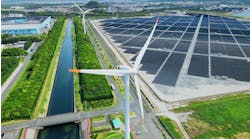According to the U.S. Energy Information Administration, commercial buildings accounted for 18% of all energy use in 2021. This could easily be reduced in a number of ways. Over the past decade, however, electricity costs have remained flat. Thus, there was little monetary incentive to change.
But that has changed over the past year. Energy prices are now reaching all-time highs. As a result, efficiency has become a top priority for those paying the bills.
As rising energy costs are expected to continue through 2023 and possibly longer, now is the time to get serious about improving energy efficiency in buildings. The good news is that recent government actions and new financing options have made it easier than ever to make buildings more efficient. Here are four ways owners and operators can improve project efficiency and mitigate energy price hikes.
1. Occupancy tracking technology
Generally speaking, tracking the whereabouts of building occupants has nothing to do with spying on people. Instead, the use of technology in the form of surveillance cameras, door controllers, and proximity sensors to determine anonymously where occupants are located has everything to do with energy conservation. In many buildings—and even more so with the advent of the hybrid workforce—entire suites and floors of a building may be unoccupied for significant periods of time. If this is the case, shutting down lighting, heating, ventilation, and air-conditioning (HVAC) equipment, elevators and escalators, and even Wi-Fi can make meaningful dents in monthly energy consumption bills.
2. HVAC efficiency baselining
While a HVAC system may be successful at heating and cooling a building, it may not be operating in an efficient way. Smart building energy management platforms collect data from HVAC systems over time to track performance. HVAC energy management platforms have come a long way and are apt at identifying system anomalies, such as leaks or misconfigurations, that could lead to higher electricity and/or gas bills.
3. Migrating IT/OT systems to the cloud
Some commercial buildings have data-center space allocated and built out either inside or adjacent to the main building, but these facilities often aren’t energy efficient. Many use legacy designs with little done to implement modern cooling and airflow advancements. Additionally, some information and operational technology (IT/OT) systems continue to operate on legacy hardware that consumes far more electricity than needed.
One way to eliminate these data center energy inefficiencies is to migrate them into a modern cloud service provider. Not only does this eliminate most of the electricity inadequacies found in on-premises data centers, but cloud computing has also shown to lower overall long-term IT/OT operational costs. Thus, buildings get the same IT/OT benefits at a lower cost and with less IT management overhead.
4. Rightsizing network infrastructure equipment
One consideration when purchasing IT equipment for a commercial property is outward and upward scalability. In some cases, owners may have purchased network infrastructure equipment in anticipation of a large uptick in port capacity need—but then the need never materialized. Subsequently, many commercial buildings have overpurchased when it comes to the network switch equipment they have deployed. It’s not uncommon to walk into a building’s network closet to find that it utilizes only a fraction of the available network port capacity. This network equipment commonly remains powered on so it can be managed and monitored remotely even though the equipment is unused from an operational perspective.
To save on the amount of electricity consumed by the in-building network, owners should commission an audit to evaluate methods that network equipment can be consolidated or replaced with low-power alternatives. For mid- to large-size buildings, these network closet electricity savings can add up in a hurry.



